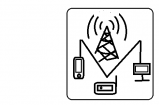Fundamentals of IPv6 address #ccna 200-301 #CCNP 300-410
Introduction to IPv6IP version 6 (IPv6) serves as the replacement protocol for IP version 4 (IPv4).Unfortunately, that one bold statement creates more questions than it answers. Why does IPv4 need to be replaced? If IPv4 needs to be replaced, when will that happen—and will it happen quickly? What exactly happens when a company or the Internet replaces IPv4 with IPv6? And the list goes on.While this introductory chapter cannot get into every detail of why IPv4 needs to eventually be replaced by IPv6, the clearest and most obvious reason for migrating TCP/IP networks to use IPv6 is growth. IPv4 uses a 32-bit address, which totals to a few billion addresses. Interestingly, that seemingly large number of addresses is too small. IPv6 increases the address to 128 bits in length. For perspective, IPv6 supplies more than 10,000,000,000,000,000,000,000,000,000 times as many addresses as IPv4.The fact that IPv6 uses a different size address field, with some different addressing rules, means that many other protocols and functions change as well. For example, IPv4 routing—in other words, the packet-forwarding process—relies on an understanding of IPv4 addresses. To support IPv6 routing, routers must understand IPv6 addresses and routing. To dynamically learn routes for IPv6 subnets, routing protocols must support these different IPv6 addressing rules, including rules about how IPv6 creates subnets. As a result, the migration from IPv4 to IPv6 is much more than changing one protocol (IP), but it impacts many protocols.This first section of the chapter discusses some of the reasons for the change from IPv4 to IPv6, along with the protocols that must change as a result
Views : 247
ipv6




